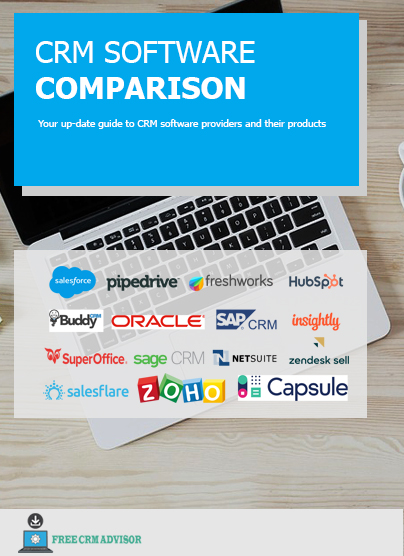CRM costs need to be really evaluated before choosing the way to put into effect a new CRM.
Some charges like license fees are obvious whereas others are hidden away in wasted time, debugging and the worst of all – possibility cost. It is so rare that CRM prices come under budget and most companies are naive to the true price of putting in place a new CRM device.
When selecting the first-class CRM to apply, businesses are bombarded with vendors, configurations and slick income pitches. This article is designed that will help you navigate some of these demanding situations to create a workable CRM selection and implementation budget that your crew can stick to.
We’ll cover:
- Identifying CRM costs as components of a finances
- Justifying the cost of a CRM investment
- Choosing a deployment model, and its impact on how you finances
- The impact of characteristic selections to your CRM budget
1. Identify your key CRM costs as additives of a budget
The main costs of a CRM price range are indexed below – but pay attention as these are only the obvious costs. The hidden fees of CRM implementation are potentially a good deal bigger.
- Needs evaluation and vendor selection
- Baseline system fee
- Training
- Migration
- Customization and dashboard setup
- Storage
- Integration
These are typically the bare minimum fees, even if you’re using a CRM out of the field you will need to installation the fields and running protocols for your enterprise. What we recommend is to add an hourly fee for inner time spent on the project. This typically quadruples the setup value at the least.
Our CRM pricing guide has pricing info from a wide range of vendors to help you forecast baseline CRM charges
You should also apprehend the CRM pricing models that exist, as a few agencies will tie you in into long contracts even as others will allow monthly contracts – greater on that below.
In fact, a latest CRM file found that most agencies pay, on average, $1,800 on each consumer of their system over a 5 yr period.
The hidden fees are what generally spiral those budgets out of control. Here are the key culprits:
- Vendor support
- Consultancy
- Ongoing customization
- Ongoing workforce training
- Minimum contract terms
- Staff overtime during implementation
- Opportunity price
We recommend searching at the whole technique from vendor selection to a complete implementation program whilst allocating a finances. Custom CRM development may be an amazing idea if you know exactly what you need; this can be a great option even for small agencies
2. Justify the cost of a CRM Investment
There are many approaches to assess an funding on the outset:
Revenue impact
This is very tough to determine, but you must attempt to quantify this.
The overarching question is: how plenty will this initiative improve my revenue? The methods to degree this as it should be are various and finding out which method to apply is context dependent. Starting with the revenue of the organisation or division, the CRM is likely simplest one aspect that affects that parent so you’ll in all likelihood need to drill down deeper. Revenue per user, customer acquisition cost or conversion rate are probable getting in the direction of how you can track progress. Of course, many CRM’s aren’t even directly related to sales, so this could be impossible.
“Revenue in line with consumer, customer acquisition cost or conversion rate are probable getting closer to how you can music progress.”
What you need to do is anchor the metric with an action in the CRM. So, for example, a income CRM that permits you to growth outreach extent and outreach channels is simpler, as you may examine the sales with the brand new system as opposed to the old. It’s often the case that the machine may improve one metric (sales call quantity for example) however not boom sales immediately or at all. That’s now not ideal, however as a minimum it is being measured. You ought to start with a hypothesis – x action is advanced by using the CRM and will bring about y. To do this, a few baseline information is important.
Cost impact
This is just like sales in that you need to predict potential cost financial savings the CRM will deliver. These may be varied: from cheaper bookkeeping to customized reporting. You need to try to quantify what the fee saving might be, benchmark the current fees, have a procedure for reviewing fees and a metric to tie the price-saving to the brand new CRM.
I labored with a organisation who had a very simple value saving. They implemented a CRM which had improved analytics from their vintage CRM; this meant reviews had been automatic as a substitute than manual and they could calculate the hours and the charges saved. One phenomenon I noticed is that saved personnel hours simply get absorbed into other tasks, so the saved time isn’t used well. So if saving time (and eventually fee) is a key motive force users have to reflect onconsideration on how the saved time might be spent.
However hard to quantify groups should goal to have a look at an ROI from a cash angle over a period, typically three to 5 years.

Graph showing cash drift advantages of properly planned CRM implementation, courtesy of Steve Schultz, Quaero
Other considerations
Alongside the cash flows there are many other justification metrics where it is so opaque to deduce a fee that perhaps the metric is some thing else. It may be team of workers morale on the way to be suffering from the use of the vintage CRM; a brand new CRM may help culture, it could allow for more collaboration or structure the commercial enterprise information for an acquisition. If those metrics can’t be sensibly tied to cash float then as a minimum try to quantify them.
“If those metrics can’t be sensibly tied to cash go with the flow then as a minimum try and quantify them.”
I was working with an employer who have been streamlining their information to bypass a due diligence process with an acquirer. They had a clear view of how the statistics needed to be stored and a new CRM turned into an vital improvement to make certain the purchase went ahead. So the final results become binary. Successful CRM implementati and unsuccessful CRM implementati implementation.
3. Choose a deployment model and pricing structure
Do you need a cloud CRM or an on-premise CRM?
The fashion is honestly towards cloud computing for CRMs – in a latest survey 79% of respondents said they had a cloud assignment underway or deliberate. Meanwhile, a third of respondents planned to boom their spending on cloud answers within the next 12 months.
The blessings of cloud CRM are nicely known:
- Smaller upfront cost: maximum cloud CRMs function on a SaaS model, meaning which you pay a according to person in line with month fee, rather than having to front a large amount of money in a single move for perpetual licenses
- Ability to scale quickly: numerous cloud CRM providers offer scalable solutions that let you add capability when you want it
- Ease of setup and operations: as there’s no hardware replacement required, cloud software can be easily applied from an infrastructure point of view
On-premise offers one clean advantage – manage. Storing within the cloud does handover control to a 3rd party, that can cause problems with:
- Service disruptions: even though very rare, after they do take place you’re on the mercy of a third party.
- Data retrieval: From the cloud, this can be more hard than if the information is saved locally.
- Regulatory concern: law about where you could store facts is a subject for administrators and additionally potential customers.
In practice, all however the most important most tech-heavy corporations store information in the cloud but on-premises solutions can work in case you need extra manipulate or the facts is particularly sensitive.
The implications for finances can be dramatic. An on-premises solution will carry a much better upfront investment for servers and setup. Setting up a cloud-primarily based CRM is much less capital intensive however, of course, you’re tied into making payments on a ordinary basis.
“You may additionally also want to improve your hardware, which can be highly-priced, and looking at how it will hold up 5 years into the destiny can be tough to predict.”
At the point of implementation, on-premise CRMs will incur help and hosting costs, which can be a massive cost because the bespoke nature of the solutions often need experts which might be on-site. You may additionally additionally want to improve your hardware, which can be high-priced, and searching at the way it will hold up 5 years into the destiny may be difficult to predict.
Cloud CRM has a much decrease upfront costs – however over the years monthly costs upload up. It’s particularly critical to view your CRM price range as a steady fixture in your commercial enterprise costs instead of a one-off challenge in case you go down this road.
The selection for on-premise vs cloud is often greater about feature set than price range but a clean costing can move a long way to helping you are making a decision.
4. Decide which CRM functions you want and the way they will affect your price range
When imposing a CRM maximum agencies approach it through searching at what capabilities they need, whereas the primary question need to be “what do I need this gadget to do for the organization?”
So before capabilities are even mentioned a totally tight commercial enterprise case needs to be generated after which distilled as truely as feasible. It is a superb discipline to attempt to distil it into one sentence. Here are a couple of examples:
- The CRM will permit us to match customers with offers more successfully and this may assist us improve our customer lifetime value.
- The CRM will assist our sales team store two hours a day for you to allow them to do extra prospecting and boom person acquisition and sales.
- The CRM will lower the workforce hours wished for weekly reporting through 30% meaning we can shop money on contract staff.
Of course, a CRM may additionally reap outcomes in multiple area, but the exercising will help you consider the huge purpose. From here this can be damaged down into quantifiable dreams and then subsequently onto functions.
You can list and prioritize your CRM desires with our comprehensive CRM requirements template
Below is some steerage on the way to make selections over positive capabilities and the way they can have an effect on your budget.
- Ease of implementation: being able to get the group of workers up and jogging with the software program is important. Daniel B. Scherer, CEO of Secure Health, surmises. “After some trial and mistakes with off-the-shelf CRM solutions, we discovered that the truly important capabilities to look for in a CRM solution are tracking capabilities and simplicity. When making this choice, you must don’t forget health for purpose; a few systems are always complex, however it ought to be as easy as possible.
- Remote access: that is an important function due to the fashion closer to running from domestic and a remote group of workers. Most cloud-based totally systems may be used from everywhere but if your gadget doesn’t have this feature then ensure that it’s no longer some thing you may need within the future.
- Feature flexibility: the range of available apps and the ability to build out customizable features needs to be considered. It is nearly sure that you will want to make modifications after the initial setup and if that is hard it is going to be a massive fee down the line.
- Integrations: you will likely need to attach your CRM to other structures which you use, and it’s critical you apprehend what is possible from day one. Obviously the more flexibility, the better, and an smooth-to-integrate CRM will reduce down on customization prices considerably
When tying this selection to budget you’ll likely be weighing up capability vs value. A ordinary pricing plan for CRMs is to fee more for extra capabilities, that could start to add lots to the overall value, specially in case you are paying in step with person/consistent with month.
If you want to customise the setup of the CRM that is possibly to add to the price range, mainly if you want to shop for in this expertise.
“Often businesses don’t leave any redundancy in their price range plan, which results in the inability to feature capabilities within the destiny.”
When looking at capability versus price, appearance at essential vs proper, trouble to enforce publish setup and cost. For example, for a function which is ideal and smooth to add later but pricey it makes sense to run the CRM with out it on the start to reduce the budget.
Often groups don’t go away any redundancy in their price range plan, which leads to the incapacity to add capabilities in the destiny. You have to assume that you’ll be wanting to feature other functions so leaving price range for that is essential.
[elementor-template id=”3635″]
Free CRM Guides

CRM Software Comparison
Your side-by-side CRM comparison chart including software features, pricing and more
[elementor-template id=”3803″]

What should be on your CRM demo script
Top10CRM.com December 22, 2019 CRM demos are a high-quality…SELECTION

Top CRM features: 9 sales professionals have their say
Top10CRM.com December 22, 2019 When choosing new software program,…SELECTION

CRM requirements gathering: your complete guide
Top10CRM.com December 21, 2019 Defining your CRM necessities accurately…SELECTION